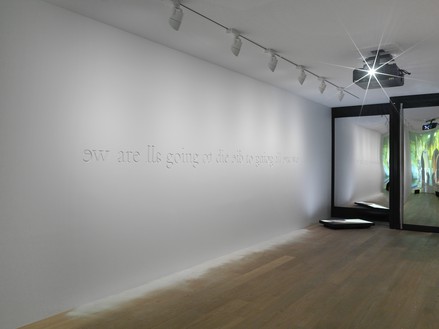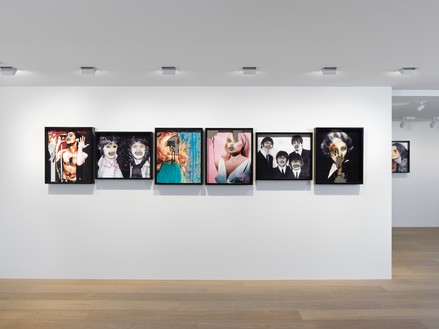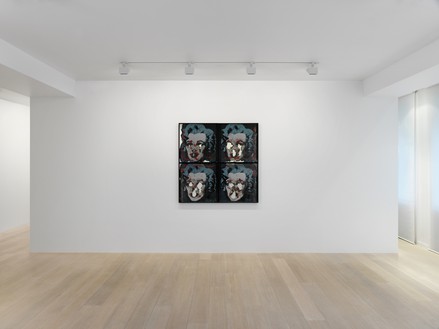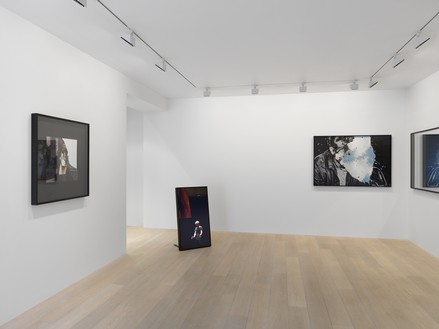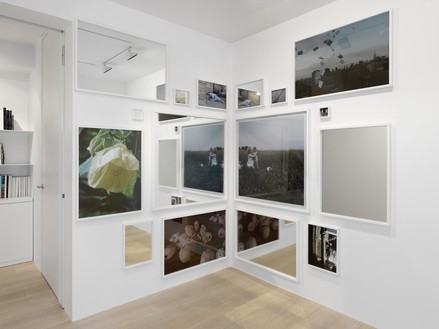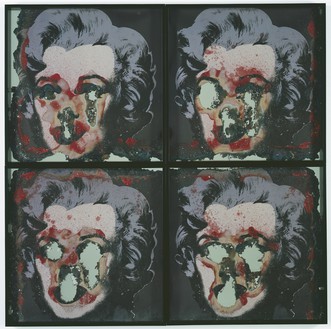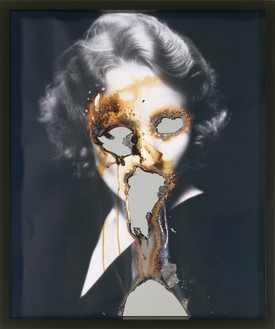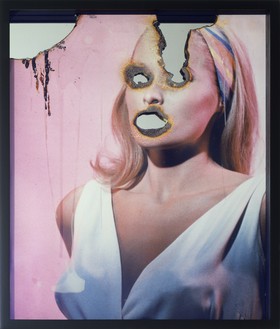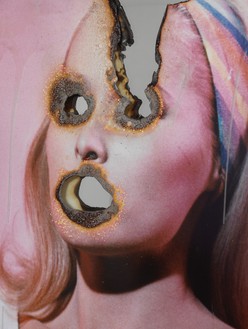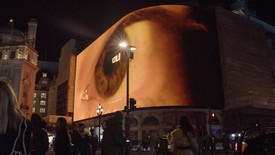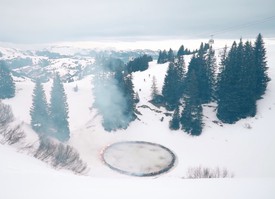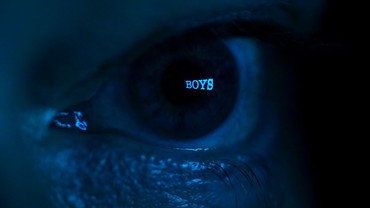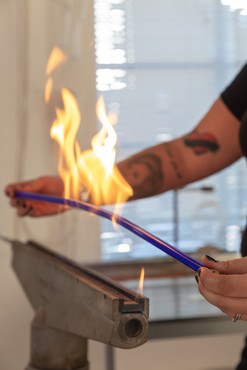About
The idea of art is to be as free as possible. . . . I retain the right to do whatever I want.
—Douglas Gordon
Gagosian Geneva is pleased to announce an exhibition by Douglas Gordon, coinciding with the opening of the Biennale de l’Image en Mouvement at the Centre d’Art Contemporain in Geneva.
Gordon’s installations, photographs, text works, and performances create the anticipation of certainty, only to subvert it. Here he presents a diverse selection of works from the last few years, including a projected film, a single-channel video displayed on a monitor, a carved wall text, and several photo-based works.
In the film projection Twin Blades, made in Tangier in 2012, a symmetrical image shows an ornate Moorish stone archway—the entrance to the casbah in Tangier—mirrored. Framed in each arch is a man intently sharpening a knife on a sharpening stone, employing the same manual technology and tools that have been in use for hundreds of years, handed down from father to son through generations.
L’idée de l'art est d'être aussi libre que possible. . . . Je me réserve le droit de faire ce que je veux.
—Douglas Gordon
Gagosian Genève a le plaisir de présenter une exposition de Douglas Gordon, qui coïncide avec l’ouverture de la Biennale de l’Image en Mouvement au Centre d’Art Contemporain Genève.
Les installations, les photographies, les textes et les performances de Douglas Gordon, une des grandes figures de sa génération dans l’univers du film et de l’art de la vidéo, créent une jouissance anticipée de la certitude, pour tout bouleverser par la suite. L’artiste présente ici une sélection de ses travaux datant de ces dernières années, qui comprend la projection d’un film, une vidéo à une seule chaîne défilant sur un écran, un texte mural sculpté et plusieurs travaux à partir de photographies.
Le film Twin Blades, réalisé à Tanger en 2012, projette l’image symétrique d’une voûte en pierre ornementée de style mauresque, l’entrée de la Casbah de Tanger, en miroir. Encadré dans chaque arc, un homme pleinement concentré aiguise un couteau sur une pierre à affûter en recourant à la même technique manuelle et aux mêmes outils utilisés pendant des siècles, transmis de père en fils depuis des générations.
Le lieu du tournage évoque un carrefour entre l’est et l’ouest, actuellement un passage de forte migration et la porte d’entrée aux mouvements de masse. L’Afrique du Nord détient le mystère de l’artisanat en danger d’extinction, du coutelier à l’hypnotiseur de scorpion en passant par le charmeur de serpent, tous des sujets dans le travail récent de Douglas Gordon. Self-portrait in Tangier montre les mains d’un homme en train de former une cuillère en argent; le battement rythmique de l’argent sur la pierre crée une bande sonore perçante et hypnotisante. Ici, la cuillère en argent, symbole de privilèges, se transforme en une chose qui devient soudainement absurde et sinistre dans ses insinuations.
Le texte mural Crash est composé des mots «we are all going to die», taillés directement dans la paroi de la galerie, un mot sur deux se lisant à l’envers. Les lettres ont été évidées de la paroi au moyen d’une lame et leurs détritus sont laissés sur le sol, attirant l’attention sur l’action urgente et directe de la création, ainsi que sur le prodige du travail en lui-même.
Share
Artist

Douglas Gordon: To Sing
On the occasion of Douglas Gordon: All I need is a little bit of everything, an exhibition in London, curator Adam Szymczyk recounts his experiences with Gordon’s work across nearly three decades, noting the continuities and evolutions.
Douglas Gordon: if when why what
Douglas Gordon took over the Piccadilly Lights advertising screen in London’s Piccadilly Circus, as well as a global network of screens in cities including Berlin, Melbourne, Milan, New York, and Seoul, nightly for three minutes at 20:22 (8:22pm) throughout December 2022, with his new film, if when why what (2018–22). The project was presented by the Cultural Institute of Radical Contemporary Art (CIRCA) in conjunction with the exhibition Douglas Gordon: Neon Ark at Gagosian, Davies Street, London.
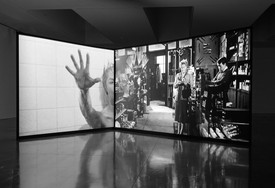
Douglas Gordon
Katrina Brown discusses the importance of Douglas Gordon’s 24 Hour Psycho (1993) and some of the films that followed, touching on threads that run throughout the artist’s career.
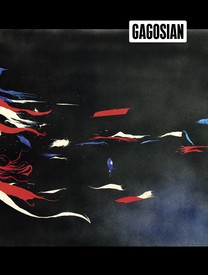
Gagosian Quarterly Spring 2018
The Spring 2018 Gagosian Quarterly with a cover by Ed Ruscha is now available for order.
Douglas Gordon: I had nowhere to go
Featuring an extensive interview with Douglas Gordon on the process of making his 2016 film I had nowhere to go: Portrait of a displaced person, this video, produced by Berlin Art Link, includes clips of Jonas Mekas and revealing anecdotes about the creation of the film.
Douglas Gordon and Morgane Tschiember
Douglas Gordon and Morgane Tschiember’s installation As close as you can for as long as it lasts, presented during Elevation 1049: Avalanche in Gstaad, Switzerland.

